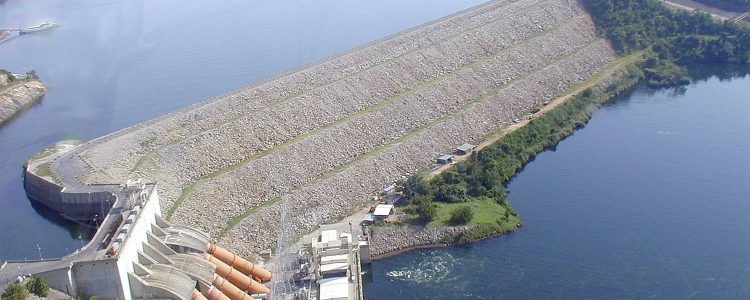The lake is formed by the Akosombo Dam, which was originally conceived by the geologist Albert Ernest Kitson in 1916, but whose construction only began in 1961 with completion in 1965. Because of the formation of Lake Volta, about 78,000 people were relocated to new towns and villages, along with 200,000 animals belonging to them. About 120 buildings were destroyed, not including small residences, as over 3,000 square miles (7,800 km2) of territory was flooded.
Economy
The Akosombo Dam provides electricity for much of the country, and possibly for export, perhaps to Togo, Benin, and nearby countries, to earn foreign exchange value. Lake Volta is also important for transportation providing a waterway for both ferries and cargo watercraft. Naturally, since the huge lake lies in a tropical area, the water remains warm year-round, and given good management, it is the location of a vast population of fish and large fisheries.
Recent developments include a large-scale enterprise to harvest submerged timber from the flooded forests under Lake Volta. This project harvests high-value tropical hardwood without requiring additional logging or destruction of existing forest and could generate the largest source of environmentally sustainable natural tropical hardwood in the world, – Wayne Dunn (2007). The Ghanaian owned company, Underwater Forest Resources has committed itself to making said lumber available in the Global Market. Flooring Solutions Ghana have also become the suppliers of Hardwood Floors, using the rare wood from the Lake.
In addition to improve navigation on the lake and increasing safety, this project is generating foreign currency for the region and reduces the dependence of locals on fishing as a primary economic activity.
The Digya National Park of Ghana lies on part of the lake’s west shore.
The main islands within the lake are Dodi, Dwarf and Kporve. Tourist cruises visit the first of these.
Source: Wikipedia


